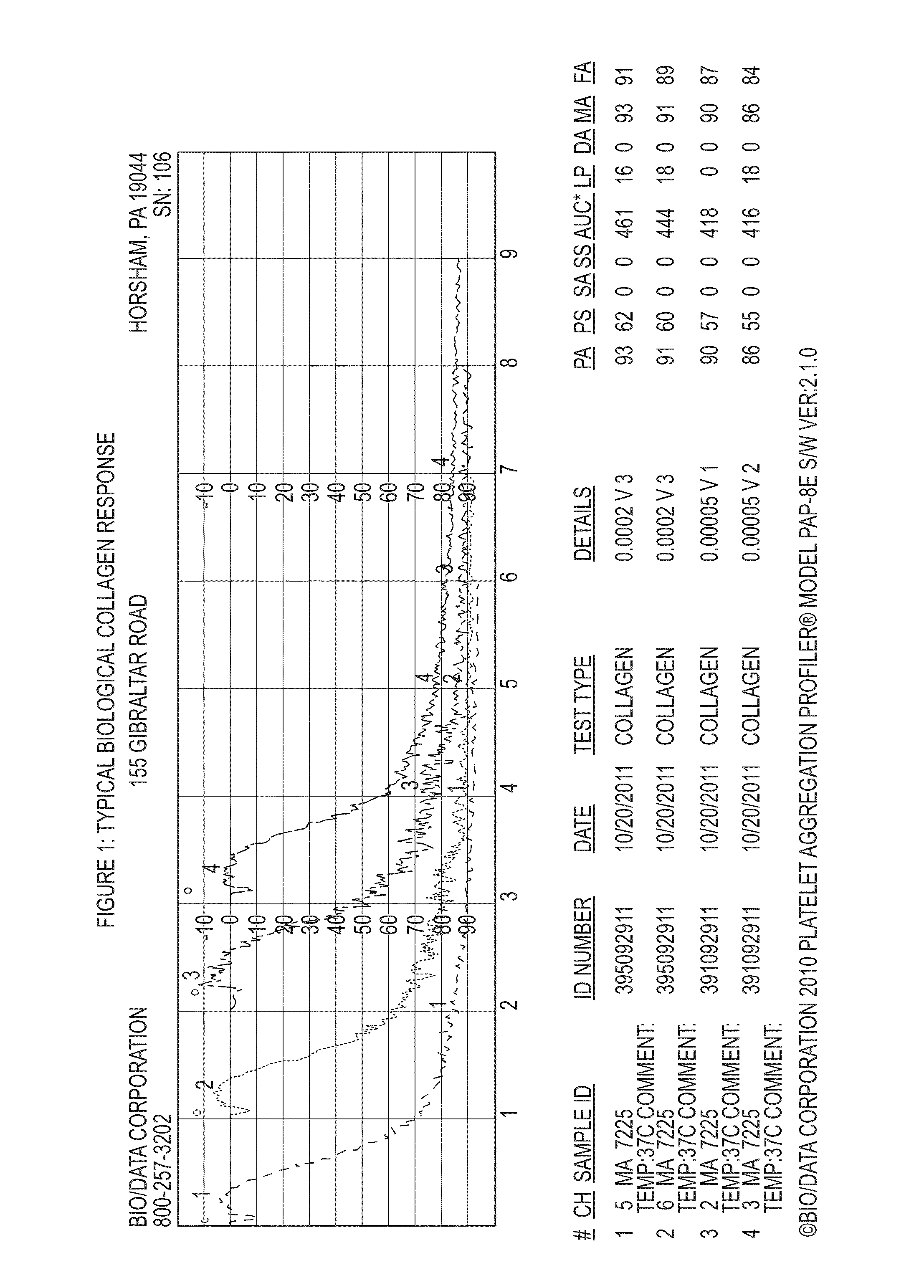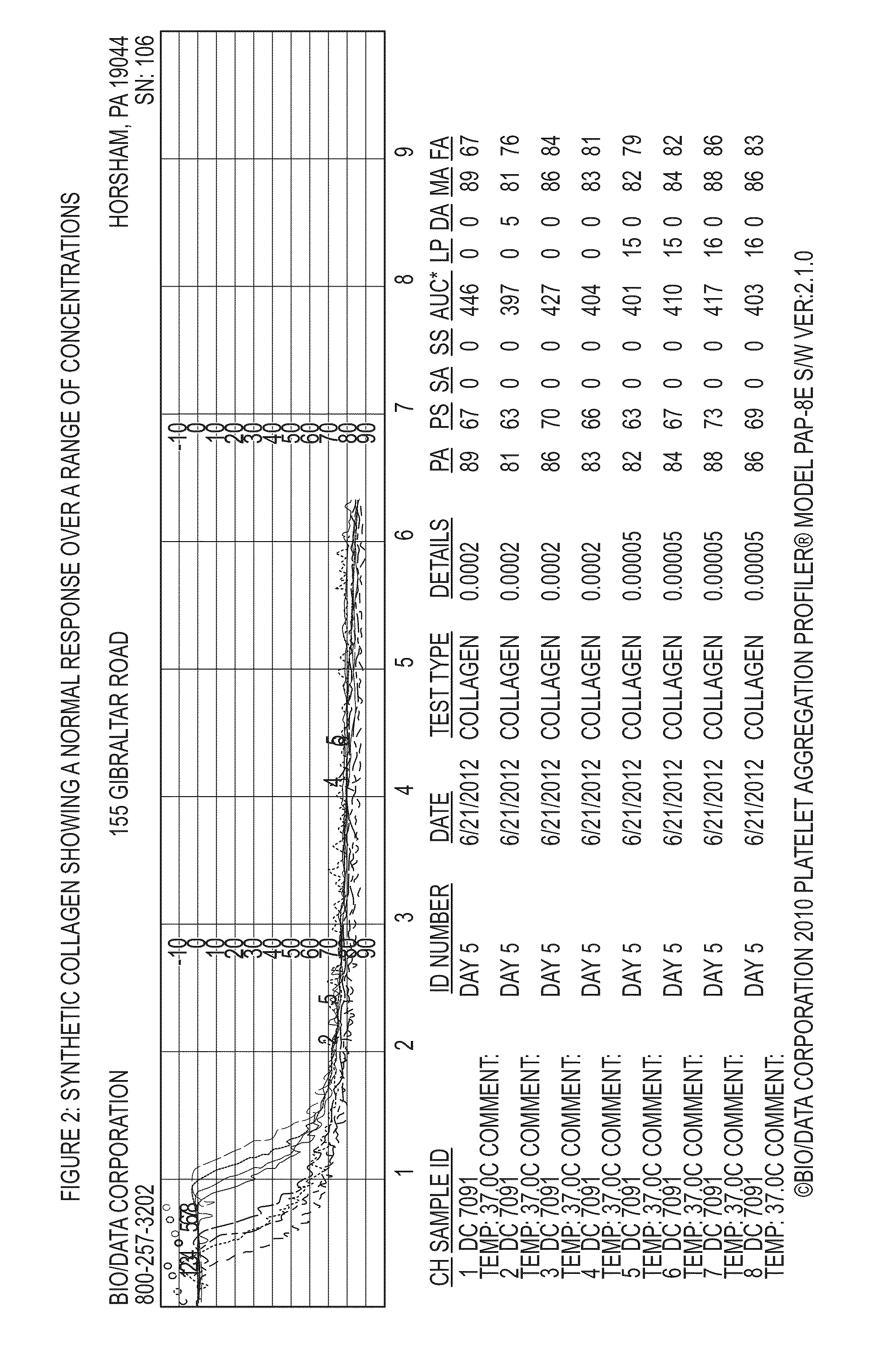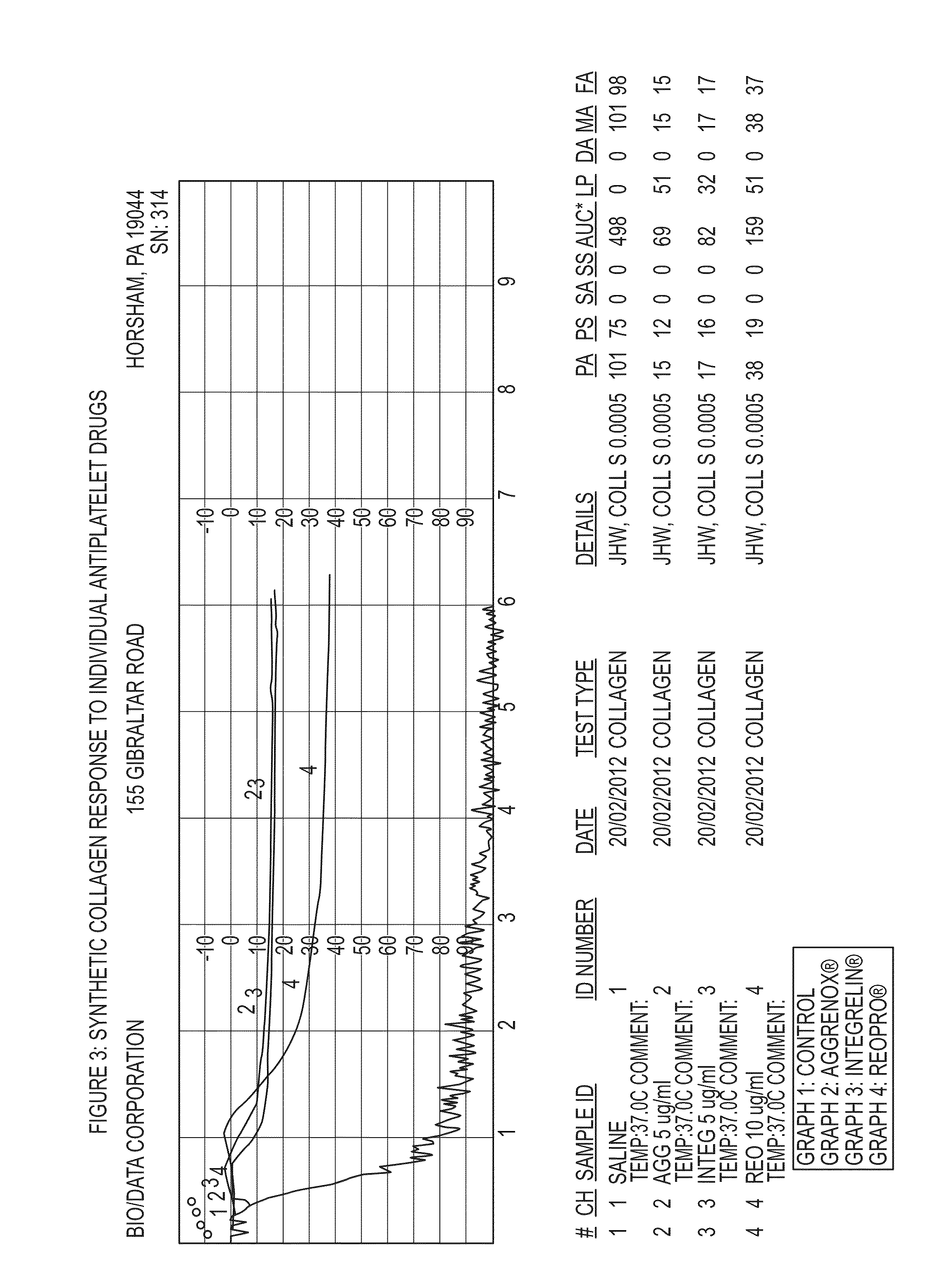Anti-platelet response and reactivity test using synthetic collagen
a technology of anti-platelet and synthetic collagen, applied in the field of cardiology, can solve the problems of insufficient effectiveness of aspirin therapy, insufficient laboratory support and guidance, and inability to mitigate patient's risk, and achieve the effect of predicting the effectiveness of the anti-platelet medication and the amount used
- Summary
- Abstract
- Description
- Claims
- Application Information
AI Technical Summary
Benefits of technology
Problems solved by technology
Method used
Image
Examples
example 1
Evaluation of Synthetic Collagen Using Flow Cytometry
Materials:
[0138]1. Collagen soluble calf skin; Bio / Data[0139]2. Synthetic Collagen (referred to in FIGS. 5-8 as Collagen S)[0140]3. Collagen—type I equine; Chrono Log[0141]4. ReoPro—2.5, 5, 10 μg / mL final concentrations[0142]5. Integrilin—1, 2, 5 μg / mL final concentrations[0143]6. Aggrastat—1, 2, 5 μg / mL final concentrations
Methods: Flow Cytometry
[0144]A vial of Bio / Data calf skin collagen was reconstituted with 0.5 mL of water to make a 1.9 mg / mL solution, A vial of Synthetic collagen was reconstituted with 1 ml of Synthetic collagen diluent to make a 0.0005 mg / mL solution. Chrono Log collagen was diluted with saline to make a 100 μg / mL solution. A stock 2% paraformaldehyde solution was diluted with calcium-free Tyrode's buffer to make a 1% paraformaldehyde solution. A set of tubes containing 1 mL of 1% paraformaldehyde was prepared. A second set of tubes which contained 30 μl of collagen reagent and 30 μl of anti-platelet drug w...
example 2
Evaluate the Use of Synthetic Collagen to Detect the Anti-Platelet Activity of Ticagrelor, Cilostazol and Abciximab in Normal Human Platelet Rich Plasma
Materials: Anti-Platelet Drugs
[0147]Ticagrelor (Brilinta®, Astra-Zeneca, London, UK; lot AL0153, expiration February 2014) was obtained as 90 mg tablets from the Loyola University Health System inpatient pharmacy. Tablets were ground using a mortar and pestle and subsequently dissolved in DMSO at a concentration of 10 mg / mL. The stock solution was diluted in deionized water to make working solutions of 0.5, 0.1 and 0.05 mg / mL.
[0148]Cilostazol (Pletal®, Otsuka Laboratories, Tokushima, Japan; lot 0B91M) was obtained as a powder. Cilostazol was dissolved in DMSO to make a stock solution of 5 mM. The stock solution was diluted in deionized water to make working solutions of 250, 125 and 50 μM.
[0149]Abciximab (ReoPro®, Eli-Lilly, Indianapolis, Ind.; lot 12D09AA, expiration May 2015) was obtained as a 2 mg / mL solution which was diluted in ...
PUM
| Property | Measurement | Unit |
|---|---|---|
| concentration | aaaaa | aaaaa |
| time | aaaaa | aaaaa |
| concentration | aaaaa | aaaaa |
Abstract
Description
Claims
Application Information
 Login to View More
Login to View More - R&D
- Intellectual Property
- Life Sciences
- Materials
- Tech Scout
- Unparalleled Data Quality
- Higher Quality Content
- 60% Fewer Hallucinations
Browse by: Latest US Patents, China's latest patents, Technical Efficacy Thesaurus, Application Domain, Technology Topic, Popular Technical Reports.
© 2025 PatSnap. All rights reserved.Legal|Privacy policy|Modern Slavery Act Transparency Statement|Sitemap|About US| Contact US: help@patsnap.com



